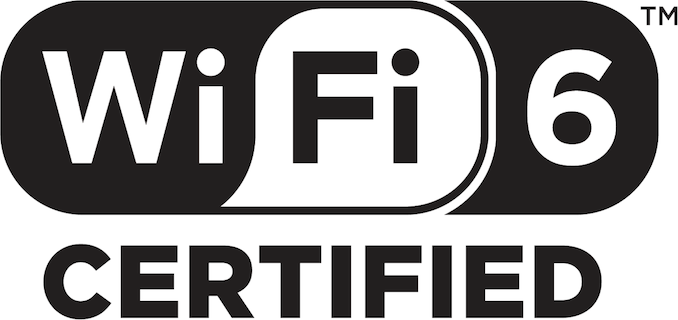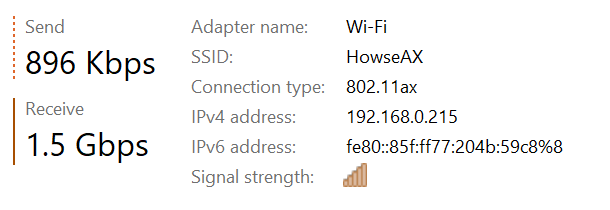AT 101: Wi-Fi 6 And Why You Want It
by Brett Howse on February 12, 2020 8:00 AM ESTTo The Future
If the question is do you need Wi-Fi 6, the answer is most assuredly “maybe”. The performance improvements are substantial, but really rely on a very strong signal to get the most data throughput. Most of the new features of Wi-Fi 6 focus on the influx of devices to the standard, and dealing with many devices connected to the same access point, or devices trying to share spectrum when connected to different access points.
The addition of Orthogonal Frequency Division Multiple Access to the Wi-Fi 6 standard will likely be the most impactful change to this revision. It will allow access points to carve up their channels into smaller slices, allowing more devices to communicate at the same time with less overhead. Each device will lose out on peak throughput, but the reduced latency should help a lot, especially in very dense environments. It should help with excessive overhead on the network layer when multiple devices are sending many small packets at once, which is a very common scenario, especially in an office or stadium situation.
Multi-User MIMO was in the Wi-Fi 5 specification as an optional implementation, and as such it did not really take off. Wi-Fi 6 should make this more prevalent, and also adds support to the MU-MIMO on the uplink, not just the downlink side. This will increase the capacity of access points for higher-speed use cases, but MU-MIMO did not get a lot of traction in Wi-Fi 5 so we will have to see how much adoption it gets in Wi-Fi 6.
The wider 160 MHz channels will offer significantly more throughput in the home environment, as we saw in our performance tests. As with the 1024-level QAM though, to see the biggest benefit you will need a strong signal. The vast majority of home networking is still limited to 1 Gigabit Ethernet, which puts Wi-Fi 6 into somewhat of an awkward spot, since it can transfer faster than most wired home networks, but even so, that is still a significant improvement over Wi-Fi 5 which would cap out around 600 Mbps on the best Wi-Fi adapters. If you work with a lot of large files, and you prefer to use Wi-Fi instead of the more consistent, yet cumbersome Ethernet, there’s still a nice boost to be had.
The future looks strong for Wi-Fi, and the Wi-Fi Alliance has made some excellent revisions to their standard to help improve Wi-Fi for the next generation of devices. As with any standards change, the impacts will not be seen right away. Both the access point, and the client need to be leveraging the new standard for the improvements to be noticeable. We’ve already seen the latest generation of smartphones start to offer Wi-Fi 6, and there’s been some movement in the PC space as well with Intel’s Project Athena. Anyone looking at a new router today should certainly opt for a Wi-Fi 6 model, but there’s likely not a major need for most people to move from Wi-Fi 5 access points right away. If you live in a heavily congested wireless area, the advantages of features like BSS coloring and Spatial Frequency Reuse should help out in those scenarios, but for people looking at purely performance, Wi-Fi 6 somewhat runs into a wall of its own making, since it can now transfer at over Gigabit speeds on a typical 2x2:2 connection. But who are we to question performance?












149 Comments
View All Comments
Nokiya Cheruhone - Wednesday, February 12, 2020 - link
Can't these things not look like turds?WiFi hardware is supposed to blend in the environment. Why does nobody produce a successor to the AirPort Extreme line that has secure firmware and high performance. Miss those days where you could simply buy an AirPort and it would be the most secure and least ugly solution.
ABR - Wednesday, February 12, 2020 - link
I was running an AEBS from 2009 until a few weeks ago. Last month I got a firmware update for it from Apple.Dug - Wednesday, February 12, 2020 - link
I agree. Netgear Orbi isn't bad though. Just too expensive at $650-700 for two units.Nokiya Cheruhone - Wednesday, February 12, 2020 - link
I have a thought that every vendor nowadays kinda treats firmware updates and security over the lifetime of the product like an afterthought, it's not even easy to compare these vendors because most consumers wouldn't care too much (or even know that there is something like embedded firmware in the first place).Nokiya Cheruhone - Wednesday, February 12, 2020 - link
How was your experience with Netgear devices?Makaveli - Wednesday, February 12, 2020 - link
I will only use Netgear router if I can load Asus merlin on it lol.They are slow at patching exploits and the stock firmware isn't great.
Makaveli - Wednesday, February 12, 2020 - link
And this is why I like Asus hardware that support Merlin firmware.He often release updates for exploits before even Asus can for the stock firmware.
I've been using Merlin firmware for 4+ years now on various routers and his timely updates is what has kept me there.
Makaveli - Wednesday, February 12, 2020 - link
Agreed with you here boss I hate the spider looking routers.name99 - Thursday, February 13, 2020 - link
The closest to the Apple experience these days appears to be Amplifi, the home version of Ubiqiti. Same aesthetics, ease of use, mostly bullet-proof. (And same lack of interest in weird tweaks and claims of things that are supposed to improve games or whatever, but mostly don’t work.)They released an ax box maybe six weeks ago. I don’t have direct experience with it, but their ac box has been mostly trouble-free for me.
vFunct - Wednesday, February 12, 2020 - link
No latency measurements?